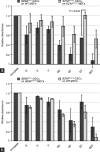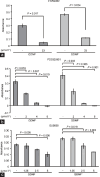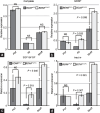A behind-the-scenes role of BDNF in the survival and differentiation of spermatogonia
- PMID: 39177410
- PMCID: PMC11784946
- DOI: 10.4103/aja202457
A behind-the-scenes role of BDNF in the survival and differentiation of spermatogonia
Abstract
Mouse spermatogenesis entails the maintenance and self-renewal of spermatogonial stem cells (SSCs), which require a complex web-like signaling network transduced by various cytokines. Although brain-derived neurotrophic factor (BDNF) is expressed in Sertoli cells in the testis, and its receptor tropomyosin receptor kinase B (TrkB) is expressed in the spermatogonial population containing SSCs, potential functions of BDNF for spermatogenesis have not been uncovered. Here, we generate BDNF conditional knockout mice and find that BDNF is dispensable for in vivo spermatogenesis and fertility. However, in vitro , we reveal that BDNF -deficient germline stem cells (GSCs) exhibit growth potential not only in the absence of glial cell line-derived neurotrophic factor (GDNF), a master regulator for GSC proliferation, but also in the absence of other factors, including epidermal growth factor (EGF), basic fibroblast growth factor (bFGF), and insulin. GSCs grown without these factors are prone to differentiation, yet they maintain expression of promyelocytic leukemia zinc finger ( Plzf ), an undifferentiated spermatogonial marker. Inhibition of phosphoinositide 3-kinase (PI3K), mitogen-activated protein kinase (MAPK)/extracellular signal-regulated kinase (ERK), and Src pathways all interfere with the growth of BDNF-deficient GSCs. Thus, our findings suggest a role for BDNF in maintaining the undifferentiated state of spermatogonia, particularly in situations where there is a shortage of growth factors.
Copyright ©The Author(s)(2024).
Conflict of interest statement
All authors declare no competing interests.
Figures






Similar articles
-
Cnot3 is required for male germ cell development and spermatogonial stem cell maintenance.Development. 2025 Aug 1;152(15):dev204557. doi: 10.1242/dev.204557. Epub 2025 Aug 15. Development. 2025. PMID: 40814964
-
Early transcriptional states of spermatogonia and marker expressions in the prepubertal human testis following chemotherapy-induced depletion.Hum Reprod. 2025 Aug 1;40(8):1467-1475. doi: 10.1093/humrep/deaf103. Hum Reprod. 2025. PMID: 40482072 Free PMC article.
-
Gene regulation and signaling transduction in mediating the self-renewal, differentiation, and apoptosis of spermatogonial stem cells.Asian J Androl. 2025 Jan 1;27(1):4-12. doi: 10.4103/aja202464. Epub 2024 Aug 20. Asian J Androl. 2025. PMID: 39162186 Free PMC article. Review.
-
Comprehensive characterization of the neurogenic and neuroprotective action of a novel TrkB agonist using mouse and human stem cell models of Alzheimer's disease.Stem Cell Res Ther. 2024 Jul 6;15(1):200. doi: 10.1186/s13287-024-03818-w. Stem Cell Res Ther. 2024. PMID: 38971770 Free PMC article.
-
Fibroblast growth factor signaling and spermatogonial stem cell self-renewal.Mol Hum Reprod. 2025 Jul 3;31(3):gaaf039. doi: 10.1093/molehr/gaaf039. Mol Hum Reprod. 2025. PMID: 40795163 Review.
References
-
- Kanatsu-Shinohara M, Shinohara T. Spermatogonial stem cell self-renewal and development. Annu Rev Cell Dev Biol. 2013;29:163–87. - PubMed
-
- Russell LD. Histological and Histopathological Evaluation of the Testis. Clearwater: Cache River Press; 1990.
-
- O’Donnell L, O’Bryan MK. Microtubules and spermatogenesis. Semin Cell Dev Biol. 2014;30:45–54. - PubMed
-
- Kanatsu-Shinohara M, Ogonuki N, Inoue K, Miki H, Ogura A, et al. Long-term proliferation in culture and germline transmission of mouse male germline stem cells. Biol Reprod. 2003;69:612–6. - PubMed
-
- Kanatsu-Shinohara M, Ogonuki N, Matoba S, Morimoto H, Ogura A, et al. Improved serum- and feeder-free culture of mouse germline stem cells. Biol Reprod. 2014;91:88. - PubMed
MeSH terms
Substances
LinkOut - more resources
Full Text Sources
Research Materials
Miscellaneous

